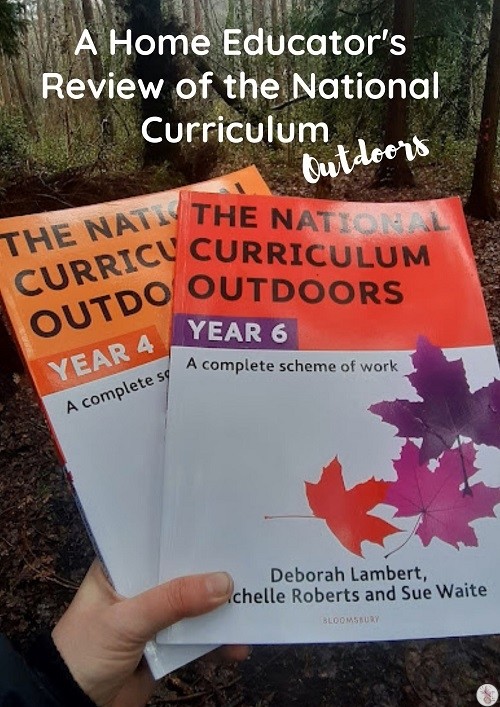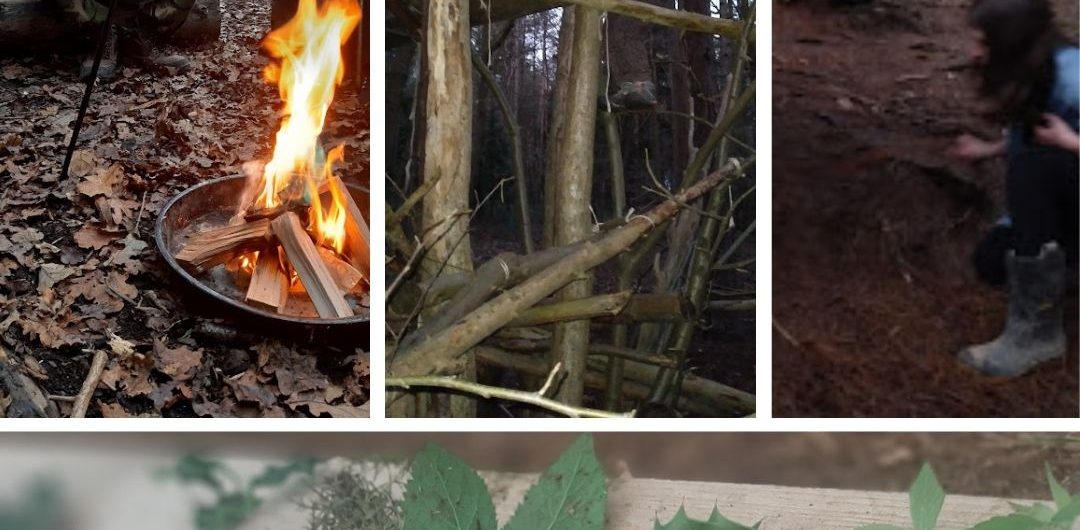Two years ago, I thought the idea of an outdoor curriculum was pretty cool. I was on a forest school group on Facebook, and heard someone was working on one, and I was pretty interested. Then COVID hit and suddenly an outdoor curriculum was more than a good idea – it was almost an imperative, so I was really excited when the curriculum was released late last year. I requested two books from Bloomsbury – years 4 and 6 – and want to tell you a little more about them.
The National Curriculum Outdoors is a complete scheme of work by Deborah Lambert, Michelle Roberts and Sue Waite that provides inspiration for primary teachers to use outdoor contexts as part of everyday teaching.
How does this affect us as home educators and why are we concerned with school curriculums?
Many home educators actually follow the national curriculum, and many of us work and learn in small groups, so the implications for home educators to learn together outdoors, especially at this time, are pretty huge.
There are five books in the series – Key stage 1, Year 3, Year 4, Year 5 and Year 6. Each book is split into subjects – English, Maths, Science, Geography, History, Art and Design, Design and Technology, French, Music and Religious Education. Each of these are split into six progressions, which are the learning goals for an academic year.
Each unit has a word bank of vocabulary for the year, and each progression ties up to curriculum content and learning experience or activities.
Within each progression, there’s a section for what to prepare, adult roles, warm-up ideas, main activities, plenary activities and evaluation or follow-on activities.
Taking a step back, the first chapter of all the books is the same. It’s about the benefits and challenges of teaching outdoors and how to embed Outdoor Learning into educational practice. Chapter two talks about assessment in the outdoors, supporting special educational needs and how to gather evidence, which is less pertinent to home education, but I’d imagine really useful to teachers. Chapter 3 outlines the risks and benefits of things like fire lighting and using tools.
The rest of the book is separated out into 6 progressions in separate subjects; English, Maths, Science, Geography, History, Art & Design, Music and Religious Education. If I was a teacher I’d love how the book provides everything I need to take the children outdoors.
From 3D shelters and quadrilateral fires for maths, to story telling around the campfire for English, to ‘dig for victory’ in history, making natural dyes for art and design, and identifying trees in science, there are so many ways to use this curriculum. Have a look at our Instagram timeline for dozens of pictures!
What does it mean for home educators? Personally, I’d love to see small groups getting together to dip in and out of the curriculum – as many of us do already – using the outdoors and parts of the curriculum. I’d also really love to see this curriculum brought up to secondary level. Schools should also consider these Outdoor learning canopy solutions to create comfortable outdoor areas for pupils to learn and play, no matter the weather.
